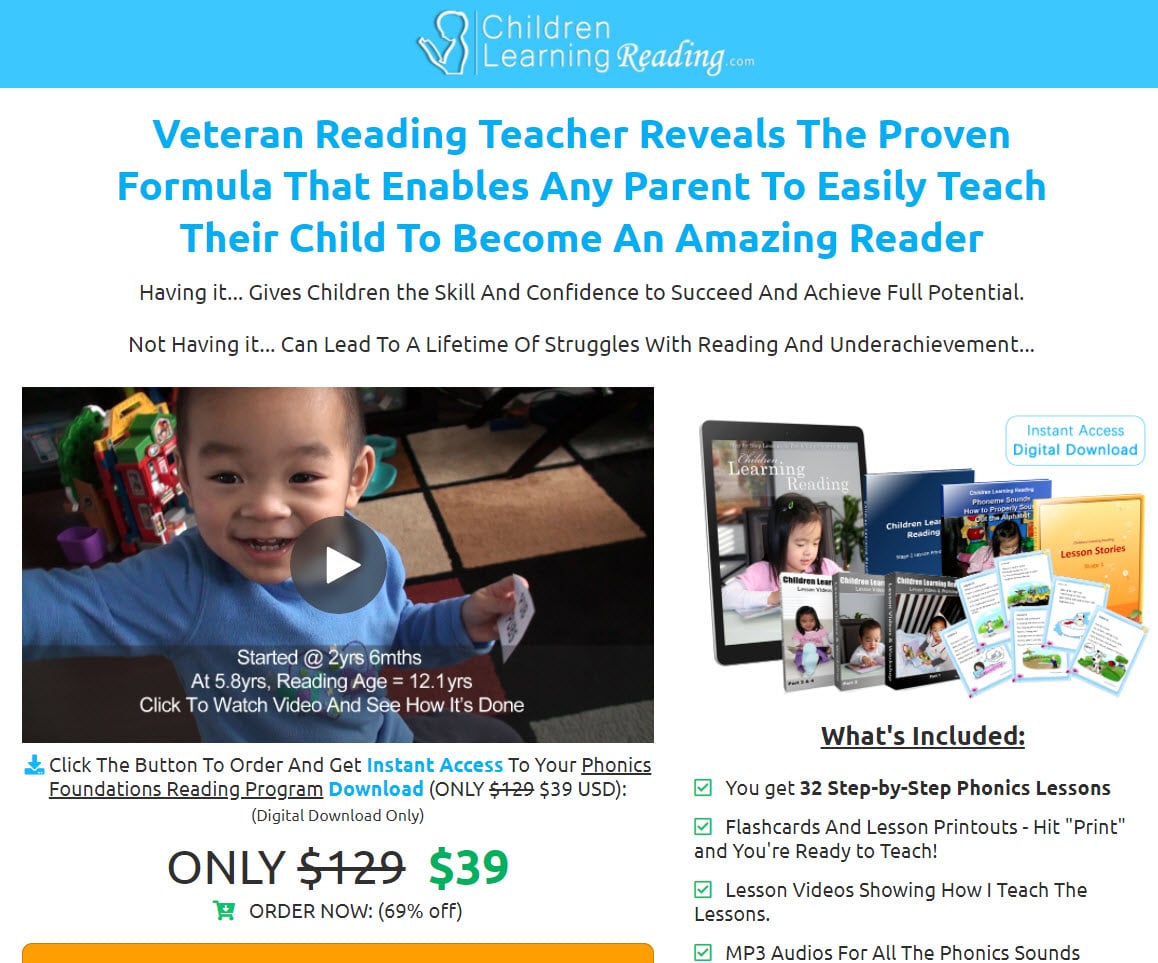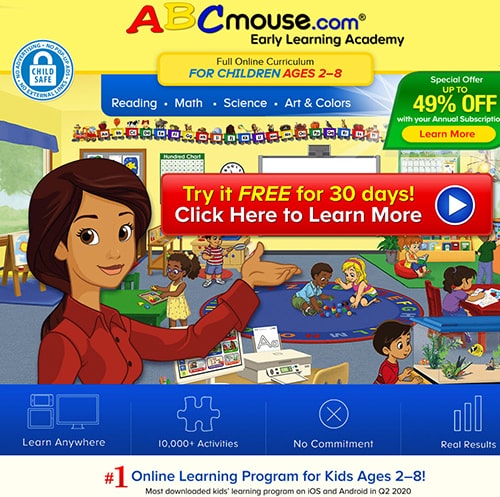My First Grader is Struggling with Reading: Advice for Parents
Is your 1st grader struggling with reading?
You’re not alone. According to Amplify Education Inc, approximately 40% of first graders were below grade level in reading in 2020.
While it can be frustrating to see your child struggle, there are things you can do as a parent to help.
Here are some practical tips:

Best Rated
See the Best Rated Reading Program
Take Quiz
Discover the ideal reading program for you & your child
Read this article
Continue reading the article
How to help your 1st grader with reading
If your first-grader is having difficulty with reading, don’t despair.
There are many things you can do to help them improve their skills. This section will provide some advice on how to help your 1st grader with reading.
While some of the advice may be obvious, it is still important to remember and implement them consistently.
Identify the problem areas
The first step is identifying where your child’s reading skills are lacking.
This can be done through various teachers, specialists, or online assessments.
This is crucial because it’s not helpful to teach your child reading at a level they’re expected to be, but rather focus on building the foundational reading skills first.
Tip: One of the most common reasons a 1st grader struggles with reading is because they are missing key phonemic awareness skills.
Once the weak areas have been identified, you can implement instruction and interventions to overcome their difficulties.
With this approach, your struggling 1st grader can improve their reading skills more effectively by developing the skills they need to be a successful reader.
Check out our blog post on the best learn-to-read programs to discover effective methods for strengthening pre-reading skills, such as phonological awareness, letter recognition, print awareness, and reading motivation. Implementing these strategies will improve your child’s pre-reading skills.
Develop Phonological Awareness
Phonological awareness is the ability to hear, identify, and manipulate individual sounds-known as phonemes-in spoken words.
However, many parents don’t realize that phonological awareness is a critical building block for learning to read.
To read well, children need to be able to break down spoken words into individual sounds and blend those sounds back together again to form a word.
One of the best ways to help your child develop phonological awareness is by reading aloud with them. When you read, choose books that have rhyming or repeating sounds. This will help draw their attention to the different sounds in words.
You can also use a learning-to-read program that will help improve phonological awareness.
Practice Print Awareness
Print awareness is the ability to understand how books work and that letters on a page can be read to form words.
This is a fundamental skill young children must develop before they start learning to read.
However, if your first-grader didn’t develop print awareness the first time around, there are some things you can do to help them.
You can start by pointing to words as you read aloud and having them trace their finger under the words.
This means showing them how to follow a line of text from left to right and top to bottom. Before reading a book, you can also point out where the front and back of the book are.
As they become more familiar with print, you can ask them questions about what they’re reading and have them point to specific words or phrases in the text.
Practice Letter Recognition
Letter recognition is the ability to identify letters of the alphabet.
When children are able to recognize the letters of the alphabet, they can begin to sound out words, which is a crucial step in learning to read.
Here are a few ways you can practice letter recognition with your child:
Play alphabet games and sing songs together. This will help them become familiar with the shapes of the letters and the sounds they make.
You can also point out letters in everyday objects and books. Explain that letters work together to make sounds that turn into words. As they become more familiar with how letters look and sound, they will be better equipped to recognize them independently.
Letter activities. Activities can include playing games, tracing letters, and making crafts. All of these activities will help your child better recognize letters and eventually read on their own.
Excessive letter exposure. 1st graders should be seeing and handling alphabet books, magazines, newspapers, and other diverse reading materials.
Another way to help them practice is by labeling everything around the house; this will help children recognize and practice their letters daily.
Build their reading motivation and confidence.
Reading motivation is when a student wants to read for fun or to learn.
It’s different from just being able to read. When students are motivated, they’re more likely to be engaged and confident in their abilities, which leads to better reading comprehension and fluency.
One of the main reasons children don’t like to read is because they think they’re not good at it.
When children feel good about themselves and their reading abilities, they will be more motivated to read.
Here are a few ways to increase their reading confidence and motivation.
It’s crucial to make reading a routine and establish a time and place for reading. Try to create a positive environment around reading by setting up a comfortable spot in your house with good lighting and plenty of pillows.
Make sure the material is appropriate for your child’s reading level. If the material is too easy, they will get bored. If it is too hard, they will get frustrated. You want them to be challenged but still be able to read most of the words.
You can help increase your child’s reading motivation by letting them choose books that interest them. This way, they will be more engaged with the book and have fun while reading, leading to a love of reading.
Additionally, encourage your child by praising their efforts and providing positive reinforcement when they read.
This will build their confidence and make them want to continue reading.
Encouragement and support through guided practice
Struggling readers need guided practice.
This is when we help them read independently but with our guidance. We want to be there to offer assistance and praise their efforts so they know that we believe in them and their ability to improve.
When students are given opportunities to read texts that are within their ability level and receive scaffolded support, they have a better chance of success.
This is because they can focus on developing their reading skills without being overwhelmed by the content.
Additionally, guided practice helps struggling readers learn and develop skills more effectively.
Be a reading role model
Children learn best by example, so it’s essential to model and show your child the importance of reading.
Read in front of your child, take them to the library, and discuss the books you’re reading together. Showing your child that reading is a priority for you will help them to understand its importance.
Start by making time every day to read together. You can also take turns reading aloud or have your child read to you. As your child grows older, encourage them to read independently for at least 20 minutes daily.
Help create a positive and encouraging environment at home where reading is valued.
Make it multi-sensory.
Multi-sensory approaches are great for all types of students, especially those struggling with reading.
Engaging all of their senses helps them remember information better. This means incorporating activities that use sight, sound, and touch into the reading experience. By doing this, you can make reading more fun for first graders and help them create better connections in their brains.
You should use various methods to help your child learn to read, including books, games, flashcards, and apps. You can also make things more fun by reading aloud together or acting out stories as you read them.
Read with your child daily
Reading aloud to your child has many benefits.
It helps them develop their reading skills and allows them to enjoy stories and books that they might not be able to read on their own yet. Reading together is a great way to bond with your child and help them learn about the world around them.
Recommended books for struggling readers in the 1st grade
One book that may be helpful for first-grade struggling readers is Goodnight Moon by Margaret Wise Brown.
This book is a classic bedtime story with simple text and repetitive phrases that can be easy for little ones to follow.
Another option is Where The Wild Things Are by Maurice Sendak. This story includes more complex language, but the illustrations can help kids understand the meaning of the words even if they don’t know all of them.
The Cat in the Hat by Dr Seuss is also a great choice since it uses rhyming, which can make it easier for kids to decode the words.
Helping your 1st grader who is struggling to read is possible
If your child is struggling with reading, don’t despair.
There are many ways you can help them develop good reading habits and improve.
In fact, some parents may find that their children fare best when they actively get involved in developing their kids’ reading skills. You can help your child build the essential skills needed for future success by providing extra support and encouragement.
No matter what you do, don’t give up on your child.
They may be struggling right now, but with your help, they will get through it.

Natalie is a full-time blogger and former elementary school teacher who specializes in helping parents teach their kids to read. With a qualification in Early Childhood Education, over 7 years of experience in education, and a passion for literacy, Natalie provides practical tips, activities, and resources for parents looking to support their child’s learning-to-read journey. She is the proud mom of two young readers and loves sharing her knowledge and experience with other parents. Natalie enjoys spending time with her family, reading, and exploring the great outdoors when she’s not blogging.







